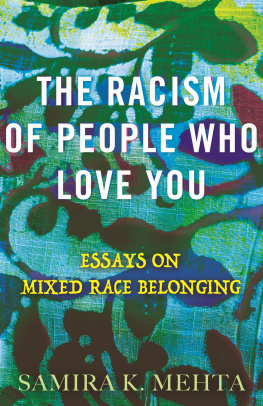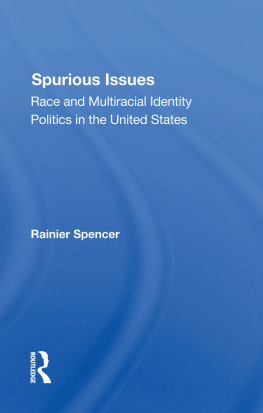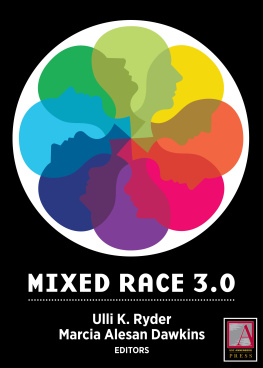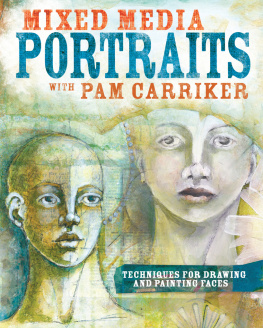 PORTRAITS OF MULTIRACIAL KIDS BY KIP FULBECK FOREWORD BY DR. MAYA SOETORO-NG AFTERWORD BY CHER
PORTRAITS OF MULTIRACIAL KIDS BY KIP FULBECK FOREWORD BY DR. MAYA SOETORO-NG AFTERWORD BY CHER  Copyright 2010 by KIP FULBECK . Foreword copyright 2010 by DR. MAYA SOETORO-NG . Afterword copyright 2010 by CHER . All rights reserved.
Copyright 2010 by KIP FULBECK . Foreword copyright 2010 by DR. MAYA SOETORO-NG . Afterword copyright 2010 by CHER . All rights reserved.
No part of this book may be reproduced in any form without written permission from the publisher. ISBN 978-1-4521-0082-1 The Library of Congress has previously cataloged this title under ISBN-: 978-0-8118-7408-3 Design by ELOISE LEIGH Chronicle Books LLC 680 Second Street San Francisco, CA 94107 www.chroniclebooks.com for Heather and Jack 
ACKNOWLEDGMENTS
Id like to express my thanks to the many giving individuals who opened up their homes, businesses, and community centers to the pandemonium of these photo shoots, as well as the many people who helped this project come to life: Kris Andrews, George Avelino, B.J. Barclay, Jonathan Cecil, Cher, Kayla Coleman, Fanshen Cox, Veronica De La Cruz, Heidi Durrow, Stuart Gaffney, Manny Garcia, Colin Gardner, Jim Goldberg, Stephen Gong, Mariko Gordon, Jocelyn Gottesman, Morgan Harris, Robert Horsting, Yumi Kinoshita, Christian Kasseck, Stacey Kwon, Robert Lee, Naomi Melo, Dan The Nazz Nazzareta, Betty Nguyen, Ben Northover, Joannie Osato, Michella Rivera-Gravage, Jennifer Ruiz, Yasamin Salari, Katy Schwager, Joel Sherman, Karen Spector, Kellie Stoelting, Shannon Sun-Higginson, Ken Tanabe, Joshua Thomas, Derrick Velasquez, Charmaine Wash, Angela Williams, and Don Young. Thanks again to the spectacular crew at Chronicle Books, with bonus thanks to Jessica Hulce, Eloise Leigh, Becca Cohen, Patti Quill, and my simpatico editor, Bridget Watson Payne. Thanks to my super assistants, Jill Carlson, Lindsay Castro, and Melissa Ortiz, who made up for my forgetfulness more times than I can count. Thanks to my literary agent, Faye Bender, and my booking agents, Andy Roth and Erica Langston, for believing in me as an artist.
Thanks to the staff at the Japanese American National Museum, especially Lisa Sasaki, Clement Hanami, and Koji Sakai; my colleagues in the UCSB Art Department; my fellow artists who continue to challenge and expand the definitions of who we are; and my many academic contemporaries advancing multiethnic research, particularly Paul Spickard, Reg Daniel, Wei Ming Dariotis, Rudy Guevarra, Velina Hasu Houston, Evelyn Hu-Dehart, Laura Kina, Cindy Nakashima, Darby Li Po Price, Curtiss Takada Rooks, Kieu Linh Valverde, and Teresa Kay Williams-Len. Thanks to my teachers, especially Phel Steinmetz, David Antin, Eleanor Antin, Georgia Florentine, Allan Kaprow, Robyn Hunt, Jim Lin, Lisa Lowe, and Martha Rosler; and of course my students, who ground and check me on a daily basis. Thanks to my family, especially my parents, who had the good sense to follow love above legality; to the hundreds of parents who allowed me the privilege of photographing their children; and to all the kids who cut loose and took part in this whole thing (you guys were the coolest part). Special thanks to my righthand man Michael Velasquez, whose artistic skills grace each of these pages, and to Maya Soetoro-Ng, for continuing to inspire people throughout the world. I could not have made this book without the strength, criticism, and support of my wonderful wife, Heather. And to my son, Jackmay the world continue to welcome you in more ways than you can imagine.
KIP FULBECK SANTA BARBARA, CA
INTRODUCTION
I could be anywhere, picking up some innocuous bureaucratic form on a BY clipboard, filling in lines and checking boxes. KIP FULBECK NAME: ADDRESS: AGE: GENDER: And there it is, staring me in the face: RACE (CHECK ONE)







Im amazed, on a regular basis, to find this query still printed. Like some old joke thats lost its humor and turned sour. A true anachronism, as out of place and completely out of bounds as smoking on airplanes, WMD fabrications, or actors wearing blackface. A textual solecism. A farce.
Yet I constantly hear from people still confronted with iton job questionnaires, school surveys, traffic violations, health forms, community and housing assessments. And I still come across it occasionally myself. For millions of Americans, this question amounts to asking us to lie. Its asking us to choose one parent over another, or one great-great-grandparent over another, or one part of ourselves over another. And despite centuries of ignoring (or denying) the idea of racial mixing, multiracial heritage and multiracial identity are core ingredients of our society. Interracial unions have been part of Americas history since its inception, yet only recently have these collective and individual histories begun to be recognized.
It was just ten years ago that the U.S. Censusfor the first timeallowed participants to check more than one box to define their racial heritage, an option nearly seven million people chose to exercise and millions more will exercise in the coming years. Today, a decade later, a rapidly growing number of voices are demanding more. We want acknowledgment of all our heritages. We want to be recognized for who we are. We want to define ourselves rather than have our selves define us.
Full disclosure: I have a personal stake in this. For starters, as an artist, Ive created work exploring personal identity for the better part of two decades. In many ways, Ive bet my career on the fact that we all have a need to tell our own stories, to define ourselves, and Ive been fortunate enough to share this work with audiences of all ages all over the world. But this book is something more significant. On March 21, 2009, I became a father. My son, Jack, was bornnamed after my own father.
And in this one moment, my life, and the meaning behind my entire work as an artist, shifted significantly. After two decades making art that questions the very idea of race, that explores the complications and consequences of choosing sides or affiliations (or worse, having them chosen for you), that argues against the concepts of compartmentalization, categorization, and conceptual laziness, my stakes have suddenly been raised. And while we can rehash the fact that race doesnt exist biologically, that the very idea of human beings being broken down into genetically discrete groups is scientifically unsound, that somewhere between 50,000 to 100,000 years ago our common ancestors migrated out of what is now Africa, we must also acknowledge that, for better or worse, in the reality of our daily lives, race exists. In the broadest sense, viewing others as inherently different has allowed our species to commit some of the worst atrocities in our young historythe enslavement of western African peoples, the decimation to near extermination of Native Americans, the genocides of the Ottoman Empire, Auschwitz, Rwanda, and Nankingto name a few. But it is in the personal view that I want to focus, where seeing others as different, and being seen as different, affects us in the smallest and yet most profound ways. My mother is Cantonese; my father an American-born mix of English, Irish, and Welsh descent.
Next page






 PORTRAITS OF MULTIRACIAL KIDS BY KIP FULBECK FOREWORD BY DR. MAYA SOETORO-NG AFTERWORD BY CHER
PORTRAITS OF MULTIRACIAL KIDS BY KIP FULBECK FOREWORD BY DR. MAYA SOETORO-NG AFTERWORD BY CHER  Copyright 2010 by KIP FULBECK . Foreword copyright 2010 by DR. MAYA SOETORO-NG . Afterword copyright 2010 by CHER . All rights reserved.
Copyright 2010 by KIP FULBECK . Foreword copyright 2010 by DR. MAYA SOETORO-NG . Afterword copyright 2010 by CHER . All rights reserved.
